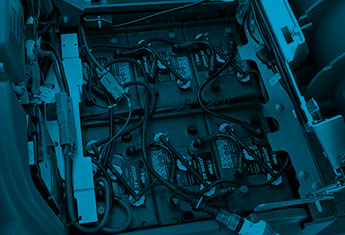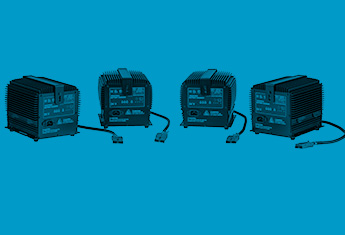Your shopping cart is empty.
Lead Acid Battery Watering Tips
Posted in Best Practices,

The battery is the beating heart of your cleaning machine — and flooded lead acid battery maintenance is critical to optimizing the run time and overall performance of your floor cleaning equipment. Unfortunately, the battery is also one of the most significant investments you’ll make over the lifespan of your cleaning machine. To protect this investment, optimize run time and get the longest life out of your battery, it’s essential to follow proper protocols and best practices around adding water to lead acid batteries.
Why Lead Acid Batteries Need to be Watered
Lead acid batteries are 100% recyclable and often offer great value in terms of performance and durability with a relatively low acquisition cost. Lead acid battery technology has come a long way since they were first invented more than 160 years ago. However, the basic chemistry and function is still the same: Lead acid batteries consist of lead plates that are fully immersed in a pool of electrolyte made up of sulfuric acid and water. That water is critical to how a lead acid battery functions, allowing ions (electricity) to flow between the plates.
But during the recharging process, as electricity flows through the water portion of the electrolyte, that water is broken down into its core elements: hydrogen and oxygen gas. (These gases are flammable, which is why it’s so important batteries are charged in a well-ventilated area, so flammable gases don’t build up.) As more water is converted into hydrogen and oxygen gases, the water level inside the battery drops. This is why most lead acid batteries need to be “watered” — have distilled or de-ionized water added to the electrolyte fill well — periodically to ensure proper function. Some types of lead acid batteries — like those equipped with Tennant Smart-fill™ Automatic Battery Watering technology — can compensate for water loss on their own and eliminate the need for manual battery watering.
Because the chemistry of lead acid batteries exists in a delicate balance that ensures optimal function, both under- and over-watering your battery could reduce function and potentially reduce its usable lifespan. That’s why it’s so critical to follow watering guidelines and best practices.
Do I Add Distilled or De-Ionized Water Before or After Charging Lead Acid Batteries?
Lead acid batteries should only be watered when fully charged. This is because charging a lead acid battery causes the density of the electrolyte solution to increase and the volume to expand. Adding distilled or de-ionized water before charging can lead to over-watering (adding too much water to the fill well), ultimately causing a water overflow that could damage the battery. Over-watering can also throw off the proper electrolyte dilution balance, negatively impacting the battery performance.
How Does Temperature Impact Battery Watering?
Temperature has a significant impact on battery water levels and can ultimately impact battery performance. Hotter weather or warmer indoor temperatures will decrease battery run time and increase the need for battery watering. Make sure you check battery water levels more frequently (twice weekly or more) if the battery is stored and/or operated in warmer temperatures.
How to Add Water to Your Lead Acid Battery
Adding Distilled or De-Ionized Water to a Fully Charged Battery
- Make sure the machine is turned off.
- Add distilled or de-ionized water (using a funnel to prevent spillage) until the water level is approximately 1/8” below the fill well.
Adding Distilled or De-Ionized Water When a Battery Needs to be Recovered and is Not Fully Charged
- Make sure the machine is turned off.
- Add distilled or de-ionized water to the top of battery plates.
- Put batteries on a complete charge.
- Once charging is complete, check water levels again. If needed, add additional water until the water level is approximately 1/8” below the fill well.
For the performance and price, lead acid batteries can deliver a great value, but do require a little maintenance. By adding distilled or de-ionized water to your lead acid battery, you can make sure you’re fully realizing this value, getting the most run time and charge cycles out of your battery, and maximizing the performance of your Tennant cleaning machine.
RELATED LINKS
Ready to take your cleaning to the next level?
Whether you are requesting a product demonstration or a quote, ordering parts, or making a service appointment, you've come to the right place. Tennant professional representatives are ready with answers to your questions, and we look forward to showing you how much we appreciate your business.




